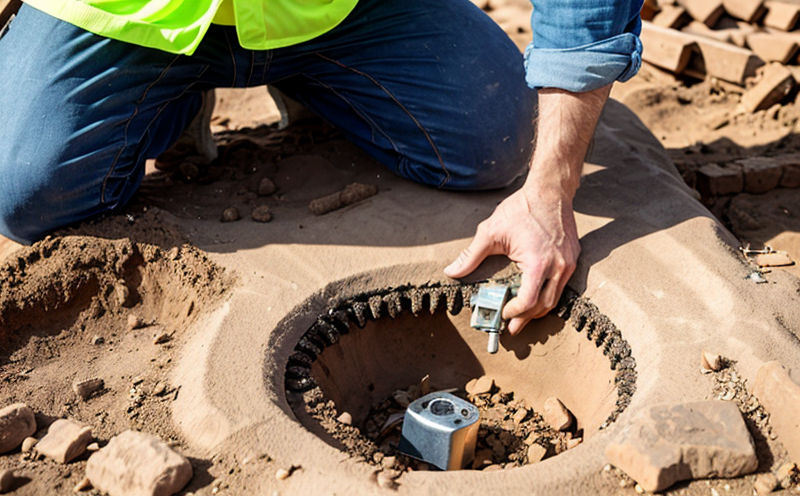Earthing connection inspection
The integrity of an earthing connection is paramount in construction and building inspection. Earthing connections ensure safety by providing a low-impedance path to ground for electrical currents, thereby protecting both personnel and equipment from hazardous electrical faults.
In the context of construction and building inspections, an earthing connection serves as a critical link between the electrical system and the earth, acting as a safeguard against overvoltages and lightning strikes. The primary purpose is to divert fault current away from sensitive components towards the ground, ensuring that the protective devices in place are not overloaded.
Compliance with international standards such as ISO 11582, ASTM D7293, and EN 62477-2 is essential for ensuring that the earthing connections in a building meet the required standards. These standards dictate the materials used, installation methods, and testing procedures to ensure reliability and safety.
The inspection process begins with an initial assessment of existing earthing systems within the construction site or building. This involves reviewing blueprints and specifications provided by the design team. Following this, the installation is inspected for adherence to best practices and standards. The use of specialized equipment such as earth tester instruments helps in measuring ground resistance, which should be less than 1 ohm according to international norms.
During inspections, the following aspects are evaluated:
- Material quality and compliance with relevant standards
- Correct installation practices ensuring proper grounding of all critical points
- Verification of ground resistance values using appropriate measurement tools
- Testing for continuity between various parts of the earthing system to ensure a continuous path to ground
- Assessment of corrosion resistance and durability of materials used in the construction
The inspection also includes checking for any potential points of failure or weaknesses that could compromise the integrity of the earthing connection. This ensures that all components are functioning correctly and meet the necessary safety requirements.
In addition to these technical considerations, it's important to note how these inspections contribute to overall building safety and compliance with local regulations. Properly executed earthing connections play a crucial role in preventing electrical accidents and ensuring that buildings comply with international standards for electrical safety.
Customer Impact and Satisfaction
- Enhanced Safety: By ensuring reliable earthing connections, inspections contribute to a safer working environment, reducing the risk of electrical accidents.
- Compliance Assurance: Regular inspections help construction companies comply with local regulations and international standards, avoiding potential legal issues and fines.
- Increased Productivity: Reliable earthing systems can minimize downtime caused by electrical faults, thereby enhancing overall productivity.
- Customer Confidence: Demonstrating adherence to best practices builds trust between the construction company and its clients, leading to long-term business relationships.
The primary goal is to ensure that all installations meet or exceed the required standards, thus providing peace of mind to both stakeholders and end-users. This service not only ensures safety but also contributes significantly towards maintaining a high standard of quality in construction projects.
Environmental and Sustainability Contributions
The inspection of earthing connections plays an essential role in enhancing the sustainability and environmental impact of buildings. By ensuring reliable electrical systems, these inspections contribute to reducing energy consumption and waste generation associated with faulty installations.
Adequate grounding helps prevent fires caused by electrical surges, which can otherwise lead to significant environmental damage. Moreover, the use of appropriate materials ensures that any potential hazards are mitigated effectively, contributing positively towards sustainable practices.
Regular inspections also aid in identifying and addressing issues early on, preventing unnecessary repairs or replacements that could be harmful to the environment. This proactive approach promotes resource efficiency and minimizes waste associated with substandard installations.
Competitive Advantage and Market Impact
The quality of earthing connections directly impacts a construction company's reputation, which is critical in today’s competitive market. By providing reliable and compliant services, companies can differentiate themselves from competitors, attracting clients looking for excellence in safety and compliance.
In the context of global standards like ISO 11582 or ASTM D7293, adherence to these norms not only ensures safety but also enhances a company’s standing within the industry. This aligns with broader sustainability goals, appealing to environmentally conscious clients who seek partners committed to sustainable practices.
Moreover, regular inspections contribute to improved project completion rates and reduced costs associated with rework or failures. These factors collectively enhance a construction firm's reputation and market position, fostering stronger client relationships and potentially opening up new opportunities for business growth.





